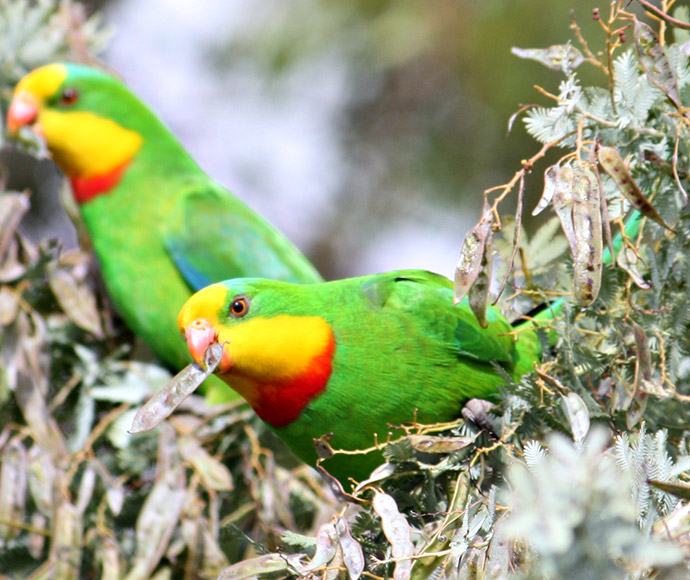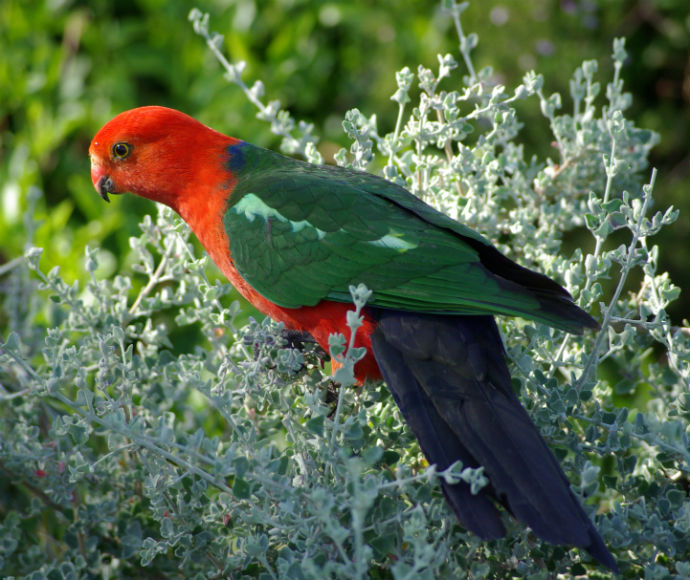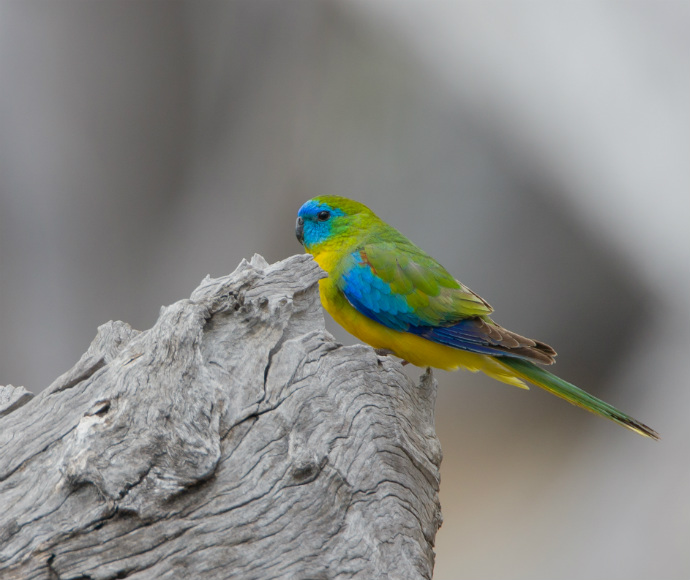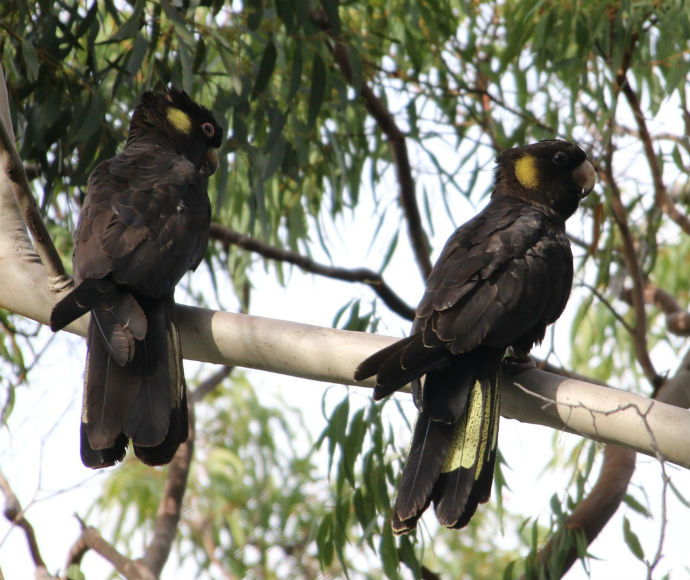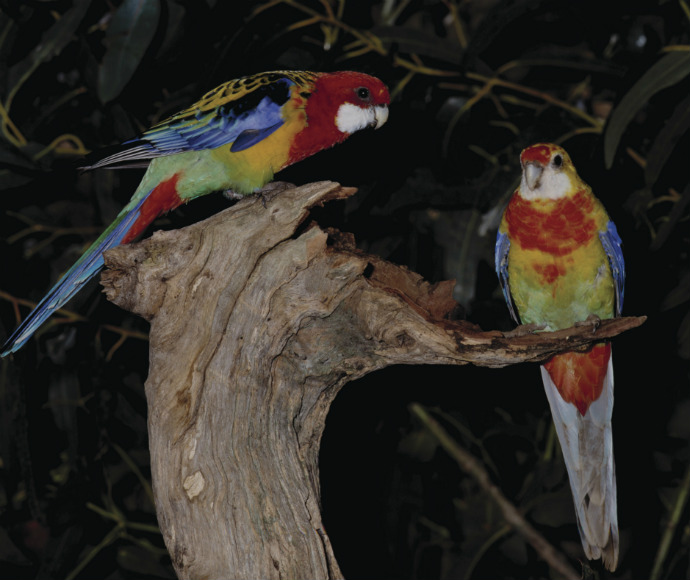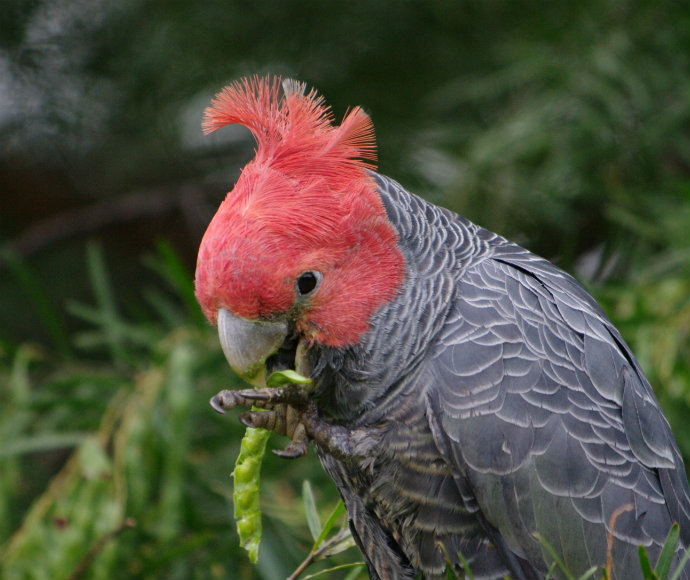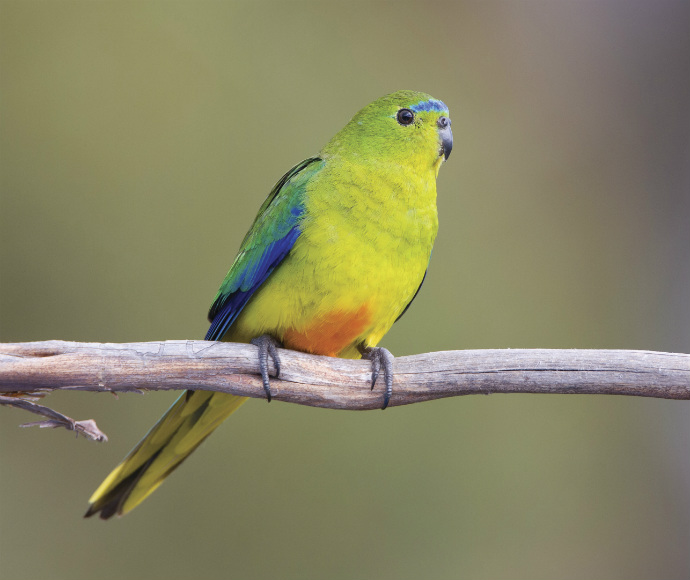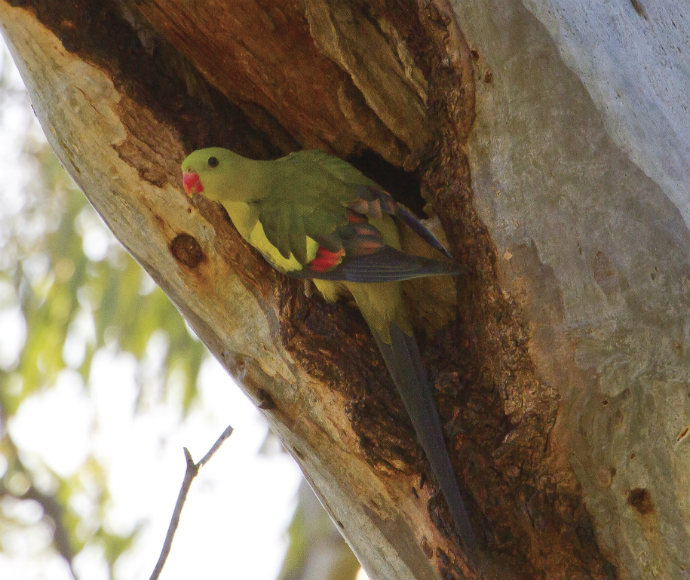Around 300 species of the parrot family have been recorded throughout the world. Of the 56 species found in Australia, only 5 are found elsewhere in the world.
What do they look like?
Parrots are most striking for their range of brilliant colours. These colours include shades of green, red, pink, yellow, blue, purple, black and white.
In some parrot species, male and female birds have the same colouring. In others, the female is the plainer of the pair. This has 2 advantages:
- It is the male who attracts the female to mate.
- If the female is less obvious to predators, she has a better chance of surviving to breed and rear her young successfully.
Other features include:
- yoke-toed feet, with 2 toes facing directly forwards and the other 2 facing backwards, which helps parrots to hold food when eating
- a short, hooked bill with a bulging cere (the bare, wax-like structure at the base of the upper beak)
- a short neck and legs
- prominent eyes
- a large head with a compact, bulky body.
How do they communicate?
The loud, raucous noises that parrots make are a form of communication. The various calls indicate warnings of danger, locations of food, distress, and food begging, especially when young. These calls are sometimes accompanied by movement, so the flash of colours becomes part of the message as well.
Where do they live?
Parrots are found in a number of habitats, including tropical and temperate rainforests, deserts, grasslands, sub-alpine areas, open and closed forests, wet and dry sclerophyll and suburban backyards.
What do they eat?
Parrots eat seeds, nuts, fruit, berries, flowers, nectar and pollen. Some parrots will eat small insects and other small prey, including invertebrate larvae, snails and grubs.
Breeding
Most small parrots breed between August and January – the time of year when most food is available. However, some species living in dry areas will breed after rain in any season. Some cockatoos breed between March and October.
Parrots usually nest in tree hollows, though some rarer species will nest in termite mounds or on the ground. Smaller parrots lay up to eight eggs, and the young take around 5 weeks to fledge (that is, to grow feathers and leave the nest). Cockatoos and lorikeets usually lay one to 3 eggs, and it may take 3 months before young cockatoos leave the nest.
Some parrot species have developed baby-minding 'creches'. As the young grow old enough to be left alone, they are put in these creches (or nurseries) while the parents gather food.
Threats
European agriculture has provided parrots with food (in planted crops) and water (in dams and bores) in areas where they did not previously live. This has led to the population expansion of some species. However, these changes may have resulted in a drop in the numbers of other species. For example, the clearing of native forests for farmland in some areas has reduced the number of living and breeding sites for the parrots which previously lived in those habitats.
Illegal trapping and smuggling operations of live birds may have contributed to the decrease in Australian parrot populations, but the removal of eggs from their nests poses a bigger threat. This is because nest-robbers will often destroy the birds' nesting hollow, making it unavailable for the next breeding season. It is easier to obtain and transport eggs than adult birds, and more eggs than adults can be smuggled from the country and distributed overseas.
Protection of native animals
All native birds, reptiles, amphibians and mammals, but not including dingoes, are protected in New South Wales by the Biodiversity Conservation Act 2016.
